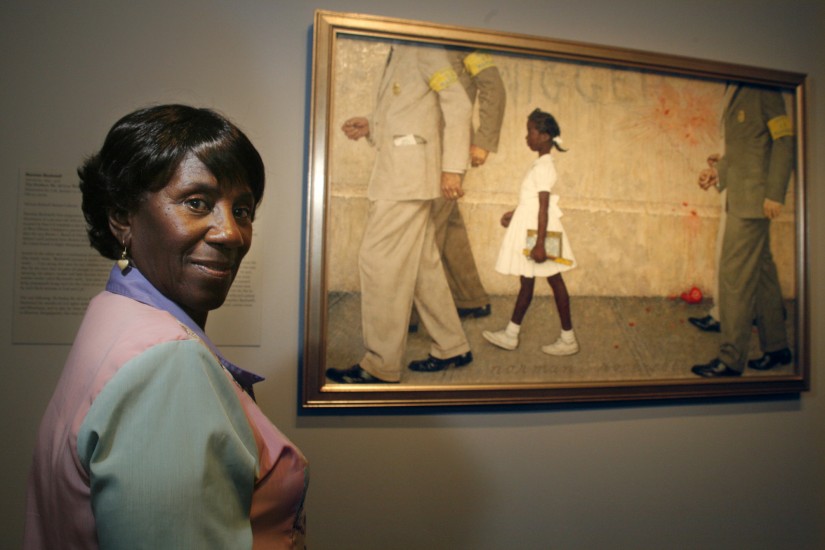Rockwell’s final Post cover, for the memorial issue commemorating John F. Kennedy’s assassination, that November, was a reprint of the artist’s 1960 JFK portrait. But by then, he’d already signed up with Look. The rival to Henry Luce’s Life magazine, the more politically adventurous Look had no misgivings about the unlikely image Rockwell proposed as his debut, despite how it diverged from everything he was famous for — unless, of course, that was part of its appeal. On October 1, 1963, art director Allen Hurlburt wrote him, “As you know, Dan [Mich, Look’s editor] and I are very excited about your idea for a painting of the Negro girl and the marshals. ... In checking our production schedules I find that we should have the art work by November 10 to make an early January issue.”
Rockwell told Hurlburt he’d gotten a head start on the painting, having identified a willing model: “I already have the 7 yr old little girl and she is perfect. Her grandmother is sewing the white dress for her. ... Be assured I am very excited about the picture.” Excited wasn’t a word he’d often used about his assignments for the Post.
Rockwell’s search for the “perfect” little girl may seem odd, given the common belief that Problem simply replicates a news photograph. But that misconception is an unwitting tribute to how completely the real episode and Rockwell’s depiction of it have fused in our collective memory. Aside from the basic situation, virtually every detail of the picture is Rockwell’s invention.
His usual MO was to sketch or paint from photographs of local residents, who would come to his studio and then follow his directions as they struck various poses. He’d employed a photographer named Bill Scovill virtually full-time since 1953, and it was Scovill who likely took the reference photos for The Problem We All Live With.
Only two African American families lived in Stockbridge then. Rockwell was friendly with the patriarch of one of them: Bill Gunn, who’d posed for The Golden Rule and also chaired the Berkshire County chapter of the NAACP. Rockwell became a lifetime member in October 1963, around the time he began working on The Problem We All Live With.
Two of Gunn’s granddaughters were approximately the right age to stand in for Bridges: first cousins named Lynda and Anita Gunn. Lynda ended up doing most of the posing. Anita and other members of the Gunn family, who had been invited to observe the photo sessions, enjoyed the Coca-Colas that Rockwell passed around. For Lynda, the tricky part was balancing herself on two wooden boards — front foot tilting upward, back foot tilting down — to simulate walking. It was an old device of Rockwell’s, and he also used it for the separate reference shots of her four adult escorts.
At least two of the burly men who posed for the painting were authentic US marshals sent out from Boston to oblige him. Another was Stockbridge Police Chief William J. Obanhein, who, oddly enough, would later enjoy a peculiarly ’60s-ish fame of his own as the “Officer Obie” of Arlo Guthrie’s 1967 hit song “Alice’s Restaurant.”
But we’ll never know which of Bridges’s escorts he impersonated. In one of Rockwell’s boldest breaks with representational convention, the marshals are painted from their shoulders down — not just faceless but headless. While that doesn’t dehumanize them, exactly — if anything, it makes their determined bearing more eloquent — nothing could better emphasize Rockwell’s understanding that the moment’s emotional truth lay in Ruby Bridges’s solitude. “Of course they were terribly disappointed that I didn’t show their faces,” he would explain years later. “But if I’d shown the four faces, you wouldn’t have seen the little girl.”
